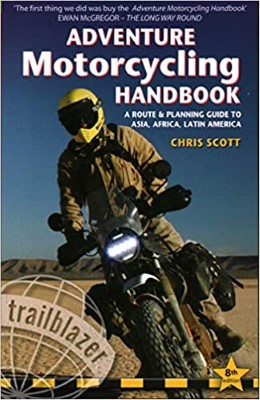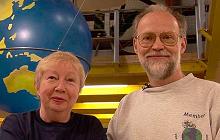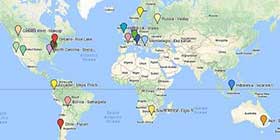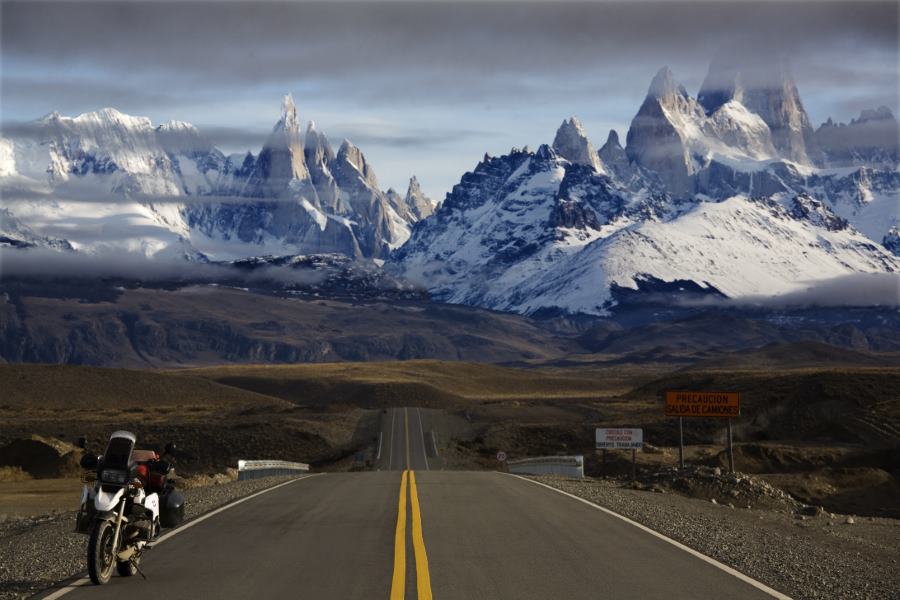 4Likes 4Likes

3 Jan 2011
|
 |
Registered Users
HUBB regular
|
|
Join Date: Apr 2010
Location: Oxford, UK
Posts: 66
|
|
|
One day… you have to live your dream. Solo through South America
Just in time for Christmas I came home from an epic journey through South America. Riding my trusty DRZ400S through Argentina, Uruguay, a tiny bit of Brazil, Paraguay, Bolivia, Peru and the whole length of Chile down to Tierra del Fuego, I covered 23,517 kilometres / 14,616 miles in four months.

This trip was everything and more I had ever dreamt of. In the weeks to come I am going to tell you all about it; here is just a little taster of my experiences:
I saw fascinating landscapes -
Cataratas del Iguazú, Argentina / Brazil
 Salar de Uyuni, Bolivia
Salar de Uyuni, Bolivia
 Torres del Paine, Chile
Torres del Paine, Chile

… and beautiful places –
Machu Picchu, Peru (no, I didn't ride my bike along this path)
 Arequipa by night, Peru
Arequipa by night, Peru
 Cerro Fitz Roy, Argentina
Cerro Fitz Roy, Argentina

I rode awesome roads –
 Ruta 26 between Cuzco and Nasca, Peru
Ruta 26 between Cuzco and Nasca, Peru
 Carretera Austral, Chile
Carretera Austral, Chile

Caught glimpses of history –
Brachiosaurus bones in the palaeontological museum MEF in Trelew, Argentina
 7,000 year old mummies from the Chinchorro culture, San Miguel de Azapa, Chile
7,000 year old mummies from the Chinchorro culture, San Miguel de Azapa, Chile
 Ocotber 2010, Copiapó, Chile
Ocotber 2010, Copiapó, Chile

Watched wonderful wildlife –
Vicuñas in the Lauca National Park, Chile
 Pelicans on the Pacific coast, Iloca, Chile
Pelicans on the Pacific coast, Iloca, Chile
 Magellan Penguins, Patagonia, Argentina
Magellan Penguins, Patagonia, Argentina

Had a fair share of “Oops” and “Doh…!” moments –
 Near Pucón, Los Lagos, Chile
Near Pucón, Los Lagos, Chile
 “Should I have listened to the GPS?”
“Should I have listened to the GPS?”

Learnt a lot about the mechanics of my bike –
In the workshop of Motoservi in Sucre, Bolivia
 During regular maintenance days
During regular maintenance days
 What a neglected sparkplug looks like after 22,000 kilometres…
What a neglected sparkplug looks like after 22,000 kilometres…

Tasted delicious food –
Llama steak, Uyuni, Bolivia
 Trucha (trout), freshly caught from Lago Titikaka, Bolivia
Trucha (trout), freshly caught from Lago Titikaka, Bolivia
 Home cooked meals…
Home cooked meals…

And, best of all, I met amazing people everywhere. Here are just a few –
Benita on the street market in La Paz, Bolivia
 Oscar and Julia in San Fernando, Chile, who let me park the bike in their dining room
Oscar and Julia in San Fernando, Chile, who let me park the bike in their dining room
 Jorge, Facundo and their friends in Otamendi, Buenos Aires Province, who introduced me to the pleasures of a proper Argentinean Asado (BBQ)
Jorge, Facundo and their friends in Otamendi, Buenos Aires Province, who introduced me to the pleasures of a proper Argentinean Asado (BBQ)

As English is not my first language, it will take me some time to write the report but I hope you will find it worth the wait…

|
|
Currently Active Users Viewing This Thread: 1 (0 Registered Users and/or Members and 1 guests)
|
|
|
 Posting Rules
Posting Rules
|
You may not post new threads
You may not post replies
You may not post attachments
You may not edit your posts
HTML code is Off
|
|
|
|

Check the RAW segments; Grant, your HU host is on every month!
Episodes below to listen to while you, err, pretend to do something or other...

2020 Edition of Chris Scott's Adventure Motorcycling Handbook.
"Ultimate global guide for red-blooded bikers planning overseas exploration. Covers choice & preparation of best bike, shipping overseas, baggage design, riding techniques, travel health, visas, documentation, safety and useful addresses." Recommended. (Grant)

Led by special operations veterans, Stanford Medicine affiliated physicians, paramedics and other travel experts, Ripcord is perfect for adventure seekers, climbers, skiers, sports enthusiasts, hunters, international travelers, humanitarian efforts, expeditions and more.
Ripcord Rescue Travel Insurance™ combines into a single integrated program the best evacuation and rescue with the premier travel insurance coverages designed for adventurers and travel is covered on motorcycles of all sizes.
(ONLY US RESIDENTS and currently has a limit of 60 days.)
Ripcord Evacuation Insurance is available for ALL nationalities.
What others say about HU...
"This site is the BIBLE for international bike travelers." Greg, Australia
"Thank you! The web site, The travels, The insight, The inspiration, Everything, just thanks." Colin, UK
"My friend and I are planning a trip from Singapore to England... We found (the HU) site invaluable as an aid to planning and have based a lot of our purchases (bikes, riding gear, etc.) on what we have learned from this site." Phil, Australia
"I for one always had an adventurous spirit, but you and Susan lit the fire for my trip and I'll be forever grateful for what you two do to inspire others to just do it." Brent, USA
"Your website is a mecca of valuable information and the (video) series is informative, entertaining, and inspiring!" Jennifer, Canada
"Your worldwide organisation and events are the Go To places to for all serious touring and aspiring touring bikers." Trevor, South Africa
"This is the answer to all my questions." Haydn, Australia
"Keep going the excellent work you are doing for Horizons Unlimited - I love it!" Thomas, Germany
Lots more comments here!

Every book a diary
Every chapter a day
Every day a journey
Refreshingly honest and compelling tales: the hights and lows of a life on the road. Solo, unsupported, budget journeys of discovery.
Authentic, engaging and evocative travel memoirs, overland, around the world and through life.
All 8 books available from the author or as eBooks and audio books
Back Road Map Books and Backroad GPS Maps for all of Canada - a must have!
New to Horizons Unlimited?
New to motorcycle travelling? New to the HU site? Confused? Too many options? It's really very simple - just 4 easy steps!
Horizons Unlimited was founded in 1997 by Grant and Susan Johnson following their journey around the world on a BMW R80G/S.
 Read more about Grant & Susan's story
Read more about Grant & Susan's story
Membership - help keep us going!
Horizons Unlimited is not a big multi-national company, just two people who love motorcycle travel and have grown what started as a hobby in 1997 into a full time job (usually 8-10 hours per day and 7 days a week) and a labour of love. To keep it going and a roof over our heads, we run events all over the world with the help of volunteers; we sell inspirational and informative DVDs; we have a few selected advertisers; and we make a small amount from memberships.
You don't have to be a Member to come to an HU meeting, access the website, or ask questions on the HUBB. What you get for your membership contribution is our sincere gratitude, good karma and knowing that you're helping to keep the motorcycle travel dream alive. Contributing Members and Gold Members do get additional features on the HUBB. Here's a list of all the Member benefits on the HUBB.
|
|
|

















 4Likes
4Likes







































 Threaded Mode
Threaded Mode








